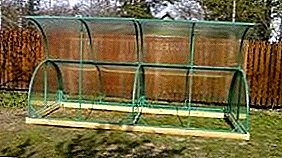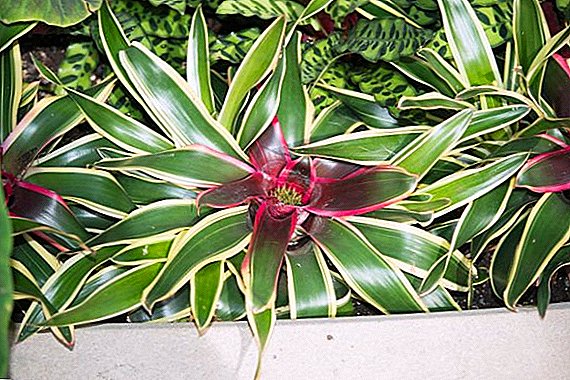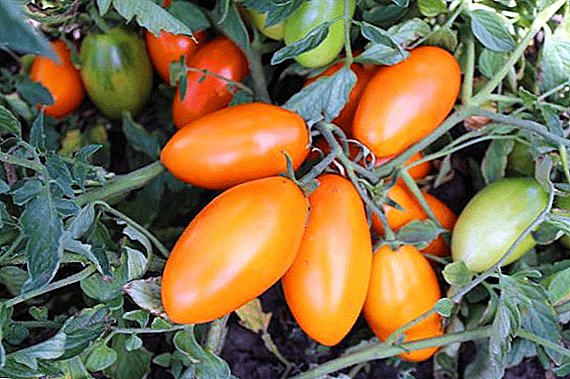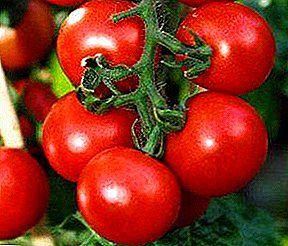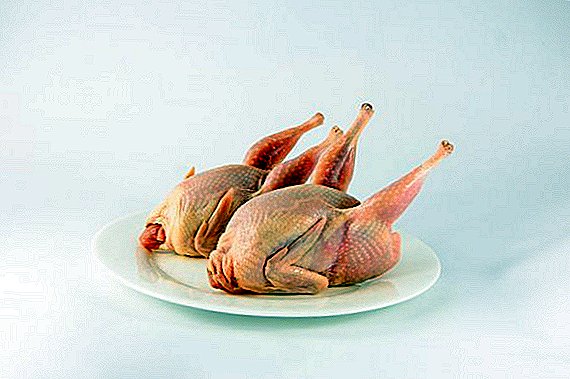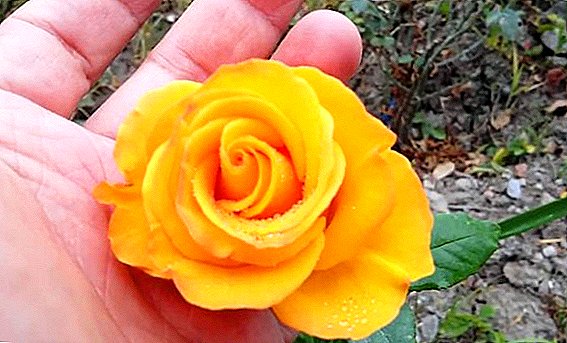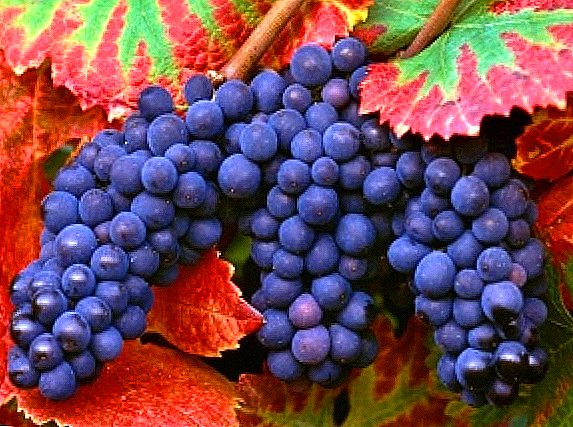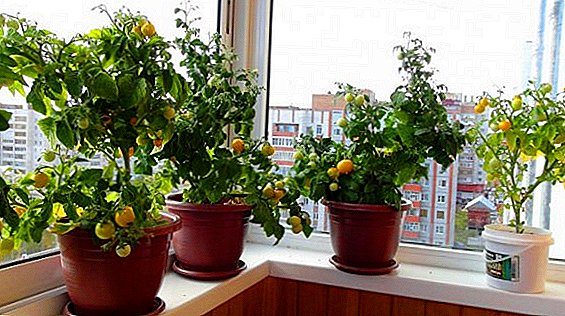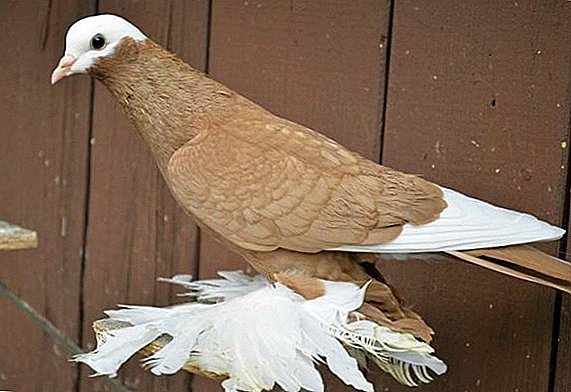 In the world there are many breeds of pigeons, which have their own characteristics and characteristics. Today we will look at a detailed description of the breed species of Armavir pigeons, which are represented by short-billed and white-headed individuals.
In the world there are many breeds of pigeons, which have their own characteristics and characteristics. Today we will look at a detailed description of the breed species of Armavir pigeons, which are represented by short-billed and white-headed individuals.
Origin
When the first settlers from the eastern regions of Tashkent, Andijan and Samarkand began to appear on the territory of the Kuban in the 18th century, they brought pigeons with them. In 1839, 42 Circassogai families settled in Armavir, who were actively involved in breeding these birds. As a result, after some time, it was possible to achieve the ideal characteristics of the resulting breed of pigeons, which was called Armavir. On the basis of the Armavir breed, two species were bred - the short-billed and the white-headed Armavir pigeons.
Check out the common species and breeds of pigeons.
Species of the breed and their characteristics
Varieties of Armavir pigeons differ from each other and have their own characteristics that need to be considered in more detail.
Short-billed pigeons
 The short-beaked variety is characterized by distinctive features in the form:
The short-beaked variety is characterized by distinctive features in the form:
- a rounded head with a broad forehead, sometimes with a forelock from one ear to the second;
- protruding eyes, the color depends on the color of the plumage: white pigeons have black eyes, all other representatives of these birds have gray eyes;
- wide white eyelids;
- a short, thick white beak bent downwards;
- underdeveloped white smooth wax;
- shortened stupid language;
- short, slightly extended neck forward, smoothly passing into the chest;
- wide, unfolded, slightly bulging chest;
- wide, long, slightly falling back to the tail;
- elongated body;
- long, tightly pressed wings, the edge of which is adjacent to the tail, consisting of 12 tail feathers;
- strongly feathered legs, the plumage is located in the form of a skirt;
- thick brilliant plumage, white, black, gray, dark chestnut, light chocolate, dark or light amber color.
Learn more about the features of breeding other lively breeds of pigeons: Baku, Turkmen, Uzbek, Turkish Takla pigeons.
The peculiarity of the short-banded pigeons is the unusual divorces on feathers, which always have a darker shade to the edge of each feather.
Whiteheads
 The white-headed variety of Armavir pigeons is characterized by the presence of:
The white-headed variety of Armavir pigeons is characterized by the presence of:
- head, elongated in length with flat dark;
- forelock, which stretches across the head from one ear to the second and goes into the mane;
- black eyes and white eyelids;
- the beak is white-pink in color, rather thin, 2.5 cm long, bent down;
- underdeveloped, pink smooth ceres;
- small necked neck with a slight bend;
- slightly convex, medium chest width;
- wide, long back;
- elongated, proportional body;
- elongated wings, maximally pressed to the body, which are tightly closed, and their edges are placed at the end of the tail;
- a closed tail with 12 tail feathers;
- legs with thick plumage, having long straight feathers and spurs;
- red, yellow, gray, coffee, sometimes black plumage, on the edge of a darker shade.
 A distinctive feature is that the ends of the feathers located on the tail are slightly semi-circular, which makes it possible to immediately attribute the pigeon with this feature to the white-headed variety.
A distinctive feature is that the ends of the feathers located on the tail are slightly semi-circular, which makes it possible to immediately attribute the pigeon with this feature to the white-headed variety.
Did you know? The vast majority of pigeons in the world have inconspicuous color, but there are breeds that are considered among the most beautiful birds in the world, first of all, they are crowned and fruity pigeons.
Conditions of detention
If you are planning to have Armavir pigeons, you must comply with the basic requirements of the breed and take into account the nuances of the placement of birds, their food and care, so that individuals do not hurt and develop normally.
In room
When keeping pigeons in the room, you need to take care of equipping the area with smooth perches, the walls must be plastered and treated with whitewash with abundant bedding on the floor, not less than 6 cm. meter territory accounted for one bird.
It is very important to pay special attention to the disinfection of dovecot, which will keep the birds healthy and reduce the possibility of infection.
Disinfection of the house is carried out at least 1 time per month., before disinfection in the room, the scraper is cleaned from litter, down, dirt, food debris perches, feeders, troughs and the floor.  Then everything is thoroughly washed with soapy water and the room is disinfected with a blowtorch - such a tool gives good results, because the fire allows you to destroy all dangerous bacteria, even in hard-to-reach places. In the spring, it is recommended to carry out a complete disinfection of the pigeon house, which consists of mechanical cleaning, wet and aerosol disinfection.
Then everything is thoroughly washed with soapy water and the room is disinfected with a blowtorch - such a tool gives good results, because the fire allows you to destroy all dangerous bacteria, even in hard-to-reach places. In the spring, it is recommended to carry out a complete disinfection of the pigeon house, which consists of mechanical cleaning, wet and aerosol disinfection.
Mechanical cleaning consists of removing litter, scrubbing feeders, waterers and perches. All cleaned objects are washed with hot water and soda ash diluted in it. The next stage consists in wet disinfection with a solution of caustic soda, after which all surfaces are thoroughly washed with clean water, and the dovecote is ventilated and dried. Processing instead of caustic soda with a formalin solution of 1% or chloramine solution (5 g of product per 100 ml of liquid) is allowed.
We recommend that you familiarize yourself with all the nuances of building a dovecote.
The final stage of disinfection is the aerosol treatment with formaldehyde vapors. For 1 cubic meter of pigeon house, 45 g of formalin, 30 g of potassium permanganate and 20 ml of pure water are used. All components are mixed together in a ceramic pot right in the pigeon house, after which the door and windows are tightly closed. In the mixing process, an aerosol is formed, penetrating into all the cracks and killing all existing microbes in the dovecote. The room should be closed for 2 hours, after which it is well ventilated.
In the mixing process, an aerosol is formed, penetrating into all the cracks and killing all existing microbes in the dovecote. The room should be closed for 2 hours, after which it is well ventilated.
Important! In order to avoid the formation of fungus, the development of bacteria and viruses in the loft, it is regularly aired, for this, in dry sunny weather, all windows and doors are opened for two to three hours.
What to feed
It is very important to make a good diet for the birds so that they are healthy and active. Unfortunately, specialized pigeon feeds do not contain enough of all the important nutrients, and their lack leads to serious problems in the body - the metabolism is disturbed, beriberiosis occurs. That is why it is necessary to consider in more detail from what the daily ration of pigeons should be based on the time of year and the period of bird life.
It is necessary to feed pigeons twice a day - in the morning and evening, after the birds have eaten, the feeders are removed from the pigeon house. Each pigeon should have about 40 grams of food daily. In summer, 10 g of feed is offered to birds in the morning and 30 g in the evening.  High-quality feed for poultry in the summer should consist of:
High-quality feed for poultry in the summer should consist of:
- 10% from wheat;
- 20% from barley;
- 10% from oats;
- 10% of corn;
- 20% of millet;
- 20% of lentils;
- 10% of the peas.
- 10% of barley;
- 20% from oats;
- 10% of millet;
- 20% of the peas.
- wheat should take from the total amount of feed 5%;
- barley - 20%;
- oats - 10%;
- corn - 10%;
- millet - 10%;
- lentils - 10%;
- peas - 35%.
Read more about the features of the domestic pigeons diet.
In winter, birds are given food that consists of:
- 40% of barley;
- 40% from oats;
- 10% of corn;
- 10% of lentils.
 The bird must be provided with fine gravel or river sand, which is poured into separate feeders, such ingredients are necessary to ensure that the food is better digested. Water is offered at room temperature, it must be fresh.
The bird must be provided with fine gravel or river sand, which is poured into separate feeders, such ingredients are necessary to ensure that the food is better digested. Water is offered at room temperature, it must be fresh.
Important! When using tap water, it is defended for 12 hours so that all the chlorine evaporates.As vitamins use fresh greens - spinach, cabbage, dandelion leaves and nettle, they are offered to the bird in the summer in a finely chopped form once a day.
Vaccination
The need for vaccination of pigeons is to minimize the possibility of the appearance of disease and strengthen the protective functions of the body. The vaccination period falls on the beginning of spring and autumn, which is associated with a sharp change in weather conditions. Often, pigeons are vaccinated against salmonellosis and Newcastle disease.
In the process of administering vaccines, it is necessary to take intervals of 10 days, that is, injecting one vaccine, you should withstand the specified period and only then prick the next vaccine from another disease. There are many different vaccines that differ in cost, name, country of manufacture, but it is worth noting that they all have the same purpose, therefore, if properly used and followed all the recommendations, they are equally effective.
The most popular vaccine against salmonellosis is Salmo PT (Salmonella PT)It is presented in the form of a yellowish-amber liquid packaged in glass containers.  The vaccine allows you to form a specific immunity to salmonellosis, the immune system is developed after a day at the second stage of vaccination, and the effect is observed within three months after the introduction of the vaccine. Pigeons are recommended to be vaccinated 2 times a year.
The vaccine allows you to form a specific immunity to salmonellosis, the immune system is developed after a day at the second stage of vaccination, and the effect is observed within three months after the introduction of the vaccine. Pigeons are recommended to be vaccinated 2 times a year.
Find out what diseases pigeons are dangerous to humans.
The most popular anti-Newcastle drugs are:
- Avivak - presented in the form of a white emulsion made from embryos of chickens with added oil and some chemical components. The vaccine is packaged in glass or plastic bottles, depending on the dosage. The drug allows you to form an immunity to the pathogen a month after the injection. Pigeons are vaccinated at the age of 120 days, the vaccine is introduced into the chest with the observance of disinfecting measures.
- La sota is a drug for the prevention of the disease and is not effective for therapeutic purposes. The drug is presented in the form of a dry light-brown vaccine, packaged in ampoules or vials, depending on the dosage. After the introduction of the vaccine in individuals, the formation of immunity occurs within 14 days.

Breeding features
A pigeon is a bird that chooses a pair for the rest of its life, therefore it is very important to keep an equal number of females and males in one aviary in order for the normal formation of pairs to occur in the mating season. The short-billed variety of Armavir pigeons cannot independently fully care for the chicks, which is associated with a natural feature - with a short beak, so they cannot feed the chicks normally. To avoid possible problems, the eggs of chicks are planted to other breeds of pigeon breadwinners.
Did you know? Pigeons were especially valuable at 11-The 12th century, when there was no mail, these birds did an excellent job with the task of delivering letters.Thus, Armavir pigeons can be kept at home, but you must follow basic guidelines for the care and feeding, as well as take into account the main features of the varieties of Armavir pigeons in order to create the most comfortable conditions for birds.


